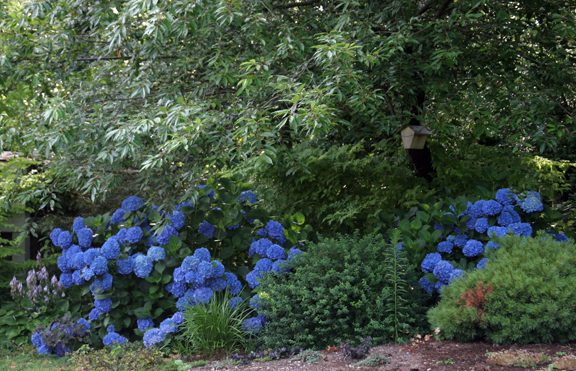Mid-Summer Garden Maintenance
Mid-Summer Garden Maintenance
Here’s what gardeners are doing in late-July to keep their yards and gardens looking great:
- Perennials: Cutting less-than-attractive, early flowering perennials down to the ground. Early flowering perennials such as Nepeta, Salvia and Silver Mound Artemisia can get cut to the ground at this time of year. Many times the plant sends up new foliage that looks good through the rest of the season. Note: do not do this with Lavender or Peony.
- Perennials: Deadheading later-blooming perennials as the flowers go by. Removing the spent flowers on Phlox, Mondarda, Daylilies and other July flowering perennials keeps the garden looking good and often stimulates new flowers to form.
- Weeding: It’s amazing how quickly the weeds spring up in mid-summer. The tiny sprouts that you barely noticed in June are suddenly huge clumps of crabgrass, carpet weed, and other undesirables. Pull these as promptly as possible before they set seed.
- Watering: Water plants deeply less often: do not water every day. With the exception of new plants, don’t hand water. Pay particular attention to the plants such as Astilbe and Hydrangeas that don’t do well if they dry out.
- Lawns: Be sure not to cut your grass too low in hot weather…mow at 2 1/2 to 3 inches high. Do not fertilize in hot weather. Water deeply but not every day – a longer soaking every four to six days will promote deeper root systems and healthier turf.
- Annuals: If you didn’t use a time-release fertilizer when you planted, be sure to fertilize your annuals at least twice in the summer with a liquid feed. Water them well first: never fertilize a thirsty plant! To encourage bushiness and repeat flowering, deadhead dahlias, marigolds, zinnias and marguerites. If annuals have stopped flowering because of heat-stress, cut them back by 1/3 to 1/2, water well and fertilize if needed.

In the photo above, notice that a branch has died on the dwarf white pine. This might be because a dog has repeatedly urinated there, or because the stem got cracked. In any case, clipping a dead or dying pieces on shrubs will improve the look of the plant and help you to monitor if the damage is still going on.
Subscribe To Our Newsletter
Sign up for our weekly email about sales and events.
